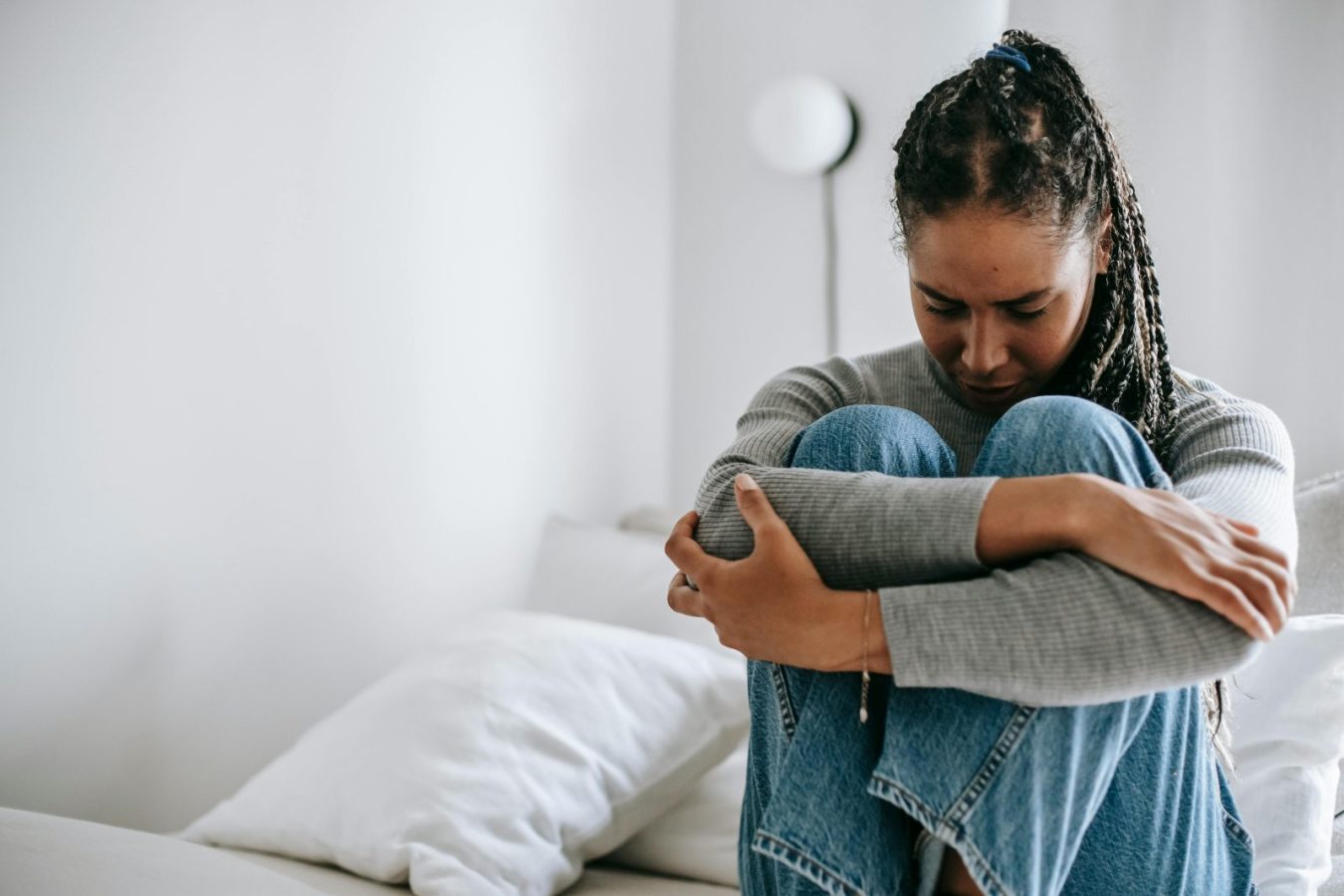Many women ask: “why do my legs hurt during period?” Menstrual cramps are well-known, but pain can radiate beyond the abdomen into the thighs, calves, or lower back. This discomfort may feel dull, heavy, or sharp, and it often returns with every cycle. Understanding why it happens helps you find better relief. Many women search online asking why do my legs hurt during period, not realizing that hormonal changes, circulation, and nerve pathways all play a role.
Hormonal Changes and Prostaglandins
During menstruation, the body releases prostaglandins — chemicals that trigger uterine contractions to shed the lining. High levels of prostaglandins can cause stronger cramps and pain that spreads to nearby areas, including the legs.
According to the National Library of Medicine , prostaglandins play a central role in menstrual pain intensity and may explain why leg discomfort accompanies periods.
Nerve Pathways and Referred Pain
The uterus and lower body share nerve pathways. This means pain signals from the uterus can “refer” to the thighs, hips, or calves. Some women even describe it as similar to growing pains or sciatica.
A Healthline review on period leg pain confirms that uterine contractions may irritate nearby nerves, explaining radiating pain into the legs.
Underlying Conditions
Sometimes leg pain during menstruation is linked to medical conditions such as:
- Endometriosis — tissue similar to uterine lining grows outside the uterus, causing severe cramps and leg pain.
- Adenomyosis — uterine tissue grows into the muscle wall, worsening cramps and radiating pain.
- Fibroids — benign tumors that increase pain and heaviness during periods.
The Mayo Clinic explains that endometriosis often causes pain extending beyond the pelvis, sometimes into the legs.

How to Relieve Leg Pain During Period
- Apply heat (heating pad, warm bath) to abdomen or legs.
- Light activity: gentle yoga, stretching, or walking.
- Stay hydrated and maintain a balanced diet rich in magnesium and omega-3s.
- Over-the-counter pain relievers like ibuprofen may reduce prostaglandin activity.
- Seek medical advice if pain is severe or interferes with daily life.
Lifestyle and Prevention
While you can’t stop hormonal changes, certain lifestyle choices may reduce menstrual leg pain over time:
- Exercise regularly: low-impact activities like walking, cycling, or swimming improve blood flow and reduce cramps.
- Nutrition: increase intake of leafy greens, fish rich in omega-3, and foods high in magnesium.
- Stress management: yoga, meditation, and deep breathing lower stress hormones that can intensify cramps.
- Healthy sleep: 7–9 hours of consistent rest supports hormone balance and recovery.
When to See a Doctor
Occasional leg pain during menstruation is normal, but seek medical help if:
- Pain is severe, sudden, or worsening each cycle.
- You have additional symptoms like heavy bleeding, fever, or pelvic pain.
- Pain interferes with work, sleep, or daily activities.
- You suspect conditions like endometriosis or fibroids.

Poor Circulation and Muscle Fatigue
Another reason why legs hurt during period is related to circulation. Hormonal fluctuations can cause blood vessels to constrict, leading to poor oxygen supply in leg muscles. This may result in heaviness, tingling, or fatigue, especially in the calves and thighs. Women with a history of varicose veins or circulation problems often report stronger menstrual leg pain.
Improving blood flow through light exercise, massage, or compression stockings may help reduce these symptoms. Staying hydrated and avoiding long periods of sitting can also improve circulation during menstruation. If you’re still wondering why do my legs hurt during period, poor blood flow and tension in the lower muscles are often part of the answer — especially when combined with stress or lack of sleep.
Sleep Quality and Pain Sensitivity
Menstrual cycles can interfere with sleep due to hormonal changes and discomfort. Poor sleep increases sensitivity to pain and lowers the body’s ability to recover. Studies suggest that women who experience sleep disturbances during their period often report more intense leg pain and cramping.
Creating a calming sleep routine — such as reducing screen time, practicing relaxation techniques, and keeping a consistent sleep schedule — may help lower overall discomfort. Quality rest is one of the most effective natural ways to manage menstrual pain.
Additional Factors That Can Make Leg Pain Worse During Period
Several external factors can intensify discomfort when you already experience leg pain during period. Long hours of sitting, dehydration, or lack of magnesium can increase muscle tension and slow circulation. Wearing tight clothing or crossing your legs for extended periods may also restrict blood flow and worsen cramps. Simple changes—like standing up every hour and staying hydrated—can noticeably ease symptoms over time.
Another common reason why legs hurt during period is iron deficiency. Low iron levels reduce oxygen delivery to muscles, which may contribute to fatigue and heaviness in the legs. Including iron-rich foods such as lentils, spinach, and lean meat, along with vitamin C, helps improve absorption and may support recovery between cycles.
FAQ: Leg Pain During Period
Many women notice unusual leg aches around their period and wonder what causes it. Experts explain that these sensations often come from hormonal shifts that affect circulation and muscle tone.
Yes, many women experience leg pain each cycle due to hormonal changes and nerve connections. However, persistent or severe pain should be checked by a doctor.
Is it normal for legs to hurt during every period?
Yes, many women experience leg pain each cycle due to hormonal changes and nerve connections. However, persistent or severe pain should be checked by a doctor.
Can exercise reduce menstrual leg pain?
Light exercise such as walking, yoga, or stretching increases blood flow and can ease leg pain during menstruation.
Does magnesium help with cramps and leg pain?
Magnesium supports muscle relaxation and may reduce cramping. Foods like spinach, nuts, and seeds are good sources; supplements may be considered with medical advice.
When should I see a doctor about period leg pain?
If pain worsens each cycle, interferes with daily activities, or is accompanied by other symptoms like heavy bleeding or fever, consult a healthcare provider.
Can leg pain during period be prevented?
While you can’t fully prevent hormonal changes, gentle exercise, magnesium-rich foods, and good sleep can reduce how much your legs hurt during period each month.
Research and Expert Insights
This article was created after reviewing trusted medical sources, including the Mayo Clinic, Healthline, and the National Library of Medicine. These studies highlight that leg pain during period is often a combination of hormonal, vascular, and nerve-related factors. Understanding these links allows women to recognize when the discomfort is normal and when it requires medical attention.
As the author of Life After 40, I’ve gathered this information from verified research and clinical reviews to make it easier to navigate these symptoms safely and confidently. If leg pain during period persists or worsens, a medical consultation is always the most reliable next step.
⚠️ Disclaimer: This article is for informational purposes only and does not replace professional medical advice. Always consult a healthcare provider about severe or persistent menstrual leg pain.

